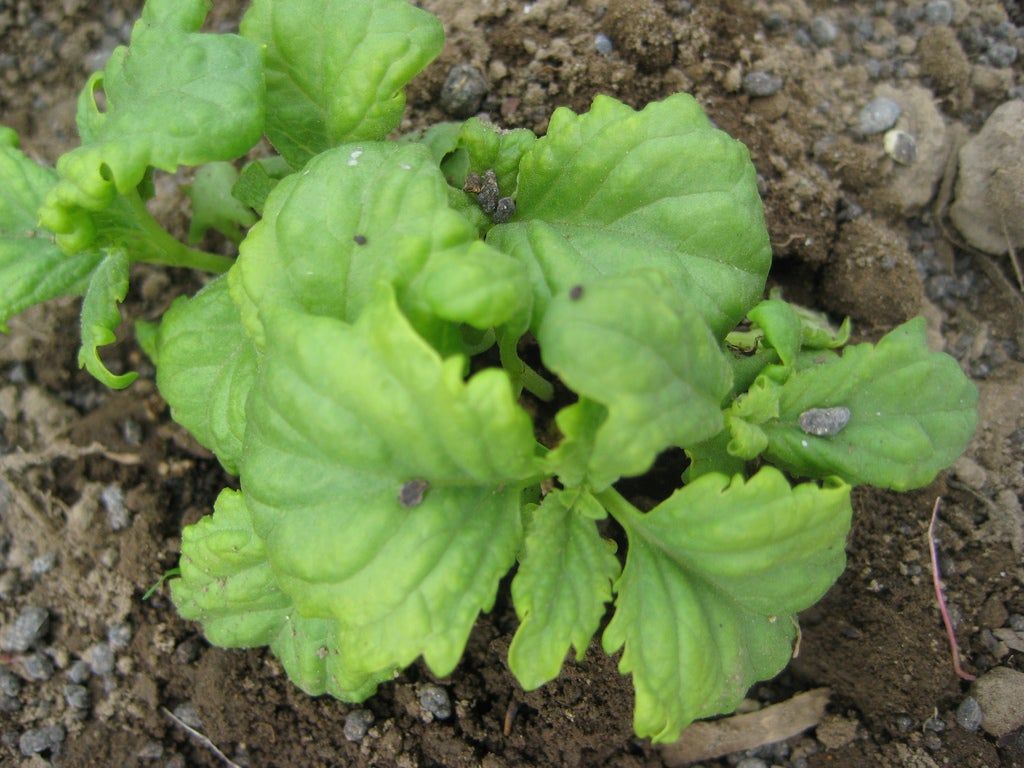Serata Basil Info: Learn How To Grow Serata Basil Plants


If you think of basil as an Italian herb, you aren’t alone. Lots of Americans think basil comes from Italy when, in fact, it hails from India. However, the pungent flavor of basil has become an integral part of many Italian dishes.
You’ll find many types of basil available in commerce. One heirloom variety you might want to try is basil Serata (Ocimum basilicum ‘Serata’). Read on for lots of Serata basil information, including tips on how to grow Serata basil in your herb garden.
What is Serata Basil?
Basil is a popular garden herb and a favorite of gardeners since it is so easy to grow. All annual basil varieties thrive during the warm season and require a sunny location in the garden. There are dozens of varieties and cultivars of basil and most of them will give tomato dishes a kick. But basil ‘Serata’ is something special and definitely worth a second look.
This is a type of basil plant that has been around so long that it is classified as an heirloom. It has ruffled leaves and a good, spicy, basil flavor. Basil ‘Serata’ is a unique variety of heirloom basil with a strong flavor and an attractive look. In fact, according to Serata basil information, these plants are really lovely. The bright green leaves of Serata basil plants have fancy ruffled edges. These make them pretty enough to do double duty as a garnish.
If you are considering growing Serata basil plants, you’ll want a little more Serata basil info.
How to Grow Serata Basil
Most basil is fairly easy to grow, and Serata basil plants are no exception. You’ll need to site this basil in a sunny spot of the garden, preferably a full sun location, to help it thrive.
Basil needs well-draining soil with a soil pH of between 6.0 and 6.5. Fortunately, this pH range is also ideal for most other vegetables. Enrich the soil by blending in organic compost since Serata basil plants prefer rich soil.
Gardening tips, videos, info and more delivered right to your inbox!
Sign up for the Gardening Know How newsletter today and receive a free copy of our e-book "How to Grow Delicious Tomatoes".
Start basil seeds indoors a month before your outdoor planting date. Sow them ¼ inch (0.5 cm.) deep and watch for them to sprout within 10 days. Pot up a plant when you see two sets of true leaves. Transplant in the garden when the temperature warms and mulch with pine straw.

Teo Spengler is a master gardener and a docent at the San Francisco Botanical Garden, where she hosts public tours. She has studied horticulture and written about nature, trees, plants, and gardening for more than two decades. Her extended family includes some 30 houseplants and hundreds of outdoor plants, including 250 trees, which are her main passion. Spengler currently splits her life between San Francisco and the French Basque Country, though she was raised in Alaska, giving her experience of gardening in a range of climates.
-
 Best Indeterminate Tomatoes: Flavor-Packed Varieties For Fresh Harvests All Summer Long
Best Indeterminate Tomatoes: Flavor-Packed Varieties For Fresh Harvests All Summer LongIndeterminate tomatoes are vining varieties that fruit all season. Discover their distinctive features and how to choose the best type to grow in your garden.
By Bonnie L. Grant
-
 The Dangers Of AI For Gardening – How To Know What’s Real When It Comes To Your Garden
The Dangers Of AI For Gardening – How To Know What’s Real When It Comes To Your GardenThings aren’t always what they seem when it comes to using AI for gardening. Be discerning when relying on AI for accuracy, and take the time to do research.
By Teo Spengler